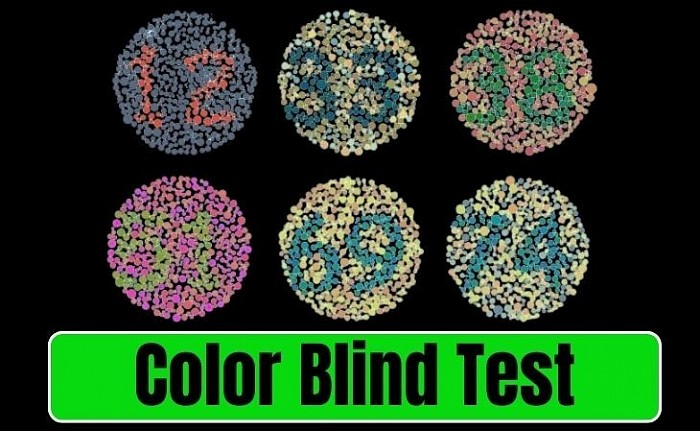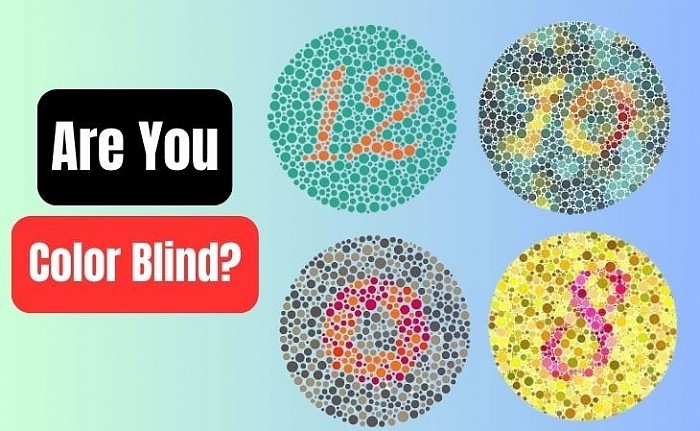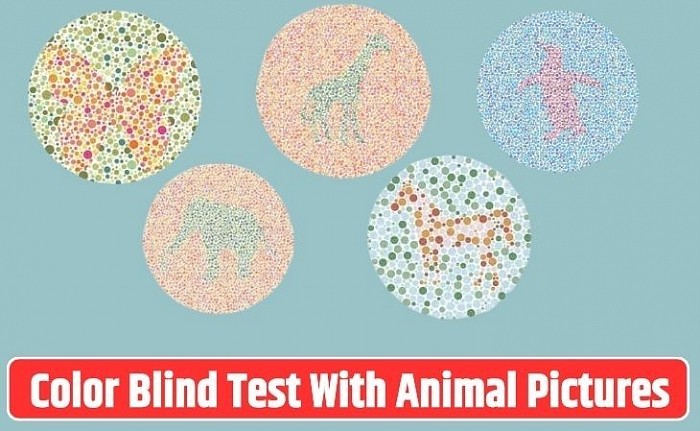Guide To Red Green Color Vision Deficiency
The ability to perceive color greatly enhances life! Consider seeing a rainbow, a rose in bloom, or staring into the eyes of a child or loved one. Color helps us develop memories, make decisions, and elicit emotions.
Because of three separate types of "cone" cells in the retina that differentiate between red, blue, and green, the average individual can see approximately one million colors. These three colors combine to form the remaining colors you see.
The holidays are approaching, and red and green are frequently used in lights and decorations that can be seen everywhere. But for people who suffer from red-green color deficiency, also known as "color blindness," the holidays may appear entirely different.
Three Types of Color Blindness
An estimated 300 million people worldwide are color blind. Just one in 200 women and one in every 12 men are partially color blind.
Although the effects of this visual perception condition vary from person to person, the main takeaway is that these people see color in a different way than most people.
The proper term for what is commonly referred to as color blindness is color-vision deficiency, which is caused by variations in each of the photoreceptor "cones" in your retina that allow you to distinguish between different colors and in low light.
The majority of "colorblind" persons are nevertheless able to sense most colors, even though some people are colorblind.
However, because their photoreceptors are malfunctioning, these people frequently have trouble differentiating certain colors or color shades. For this reason, "color deficiency" is a more accurate term for color blindness.
Three Primary Categories Of Color Vision Deficiencies Exist
Color vision deficit in red and green: This group includes about 98% of the color-blind population. Certain percentages of red and green may be difficult for those with red/green color vision deficiencies to discern.
They could appear yellowish, or grayish, or some reds could seem somewhat greener.
Green might seem more red: Fortunately, most other hues in the spectrum can usually be seen fairly well by those with this kind of color vision impairment.
Fun fact: Many individuals who suffer from this kind of color vision impairment are shocked to learn that peanut butter is not green!
Blue/yellow color deficiency: This type of color blindness is more rare than red/green. Yellow may seem reddish, gray, or violet to those who have this color vision deficit, while blue may appear green.We have to admit, it would be very interesting if the sky appeared green!
Total color blindness. Only 0.0003% of Americans suffer from this severe form of color deficiency, which is frequently accompanied by other visual difficulties.
While people with the first two types of color blindness can see at least some colors, those with true color blindness cannot see any color whatsoever. They may also have difficulty with visual acuity and clarity.
How To Live With Color Blindness
Unfortunately, color blindness and color vision deficiencies cannot be cured. The good news is that there is no risk to one's life. Most of the time, it has little to no effect on those who have it.
Many people are unaware that they have color vision deficiencies. Curious whether you may be? Take this online color blind test for free.
Nonetheless, it's amazing to realize that color influences many aspects of our lives in a big way. The difference would not be noticeable to people with normal color acuity, but it would be to those without.
For instance, recruiting persons with color vision deficiencies is prohibited in some professions. These vocations include the military, firefighters, and law enforcement.
While it may sound discriminatory, a person with color deficiencies may not be able to execute a job well if the work requires a certain level of color discrimination.
Examples are pilots who must accurately understand color-coded safety signals and electricians who must be able to perceive color-coded wires.
Additionally, colorblind people are unlikely to be successful in the professions of fashion or interior design, as color is frequently used as a basis in teaching materials by educators in schools.
A colorblind individual can essentially do anything and everything that the general public can do, except these particular examples.
Can A Color Vision Deficit Be Corrected?
Treatments for color vision deficiencies are only provided if the patient so desires and are often inherited. Some believe that the treatment is more of a hindrance than their poor color perception.
Colored filters can be placed into a single contact lens worn in one eye or worn in the lenses of a pair of glasses as part of the treatment.
This treatment helps patients distinguish between two colors that may appear to be the same by producing a difference in the wavelengths of light that each eye perceives.
When necessary, this works around the issue, but it doesn't allow a person who is color blind to see the color they are unable to see.
Are you curious to know more? EnChroma is a company that offers spectacles that are supposed to help those who are color blind see colors.
FAQs
1. What Causes Red-Green Color Vision Deficiency?
Red-green color vision deficiency, commonly known as color blindness, is caused by variations in the photoreceptor cones in the retina that distinguish between red and green colors, impacting the ability to perceive these colors accurately.
2. How Common Is Color Blindness?
Approximately 300 million people worldwide are color blind, with one in 200 women and one in every 12 men experiencing partial color blindness.
The effects can vary, but the common factor is a different perception of colors.
3. What Is The Proper Term For Color Blindness?
The accurate term is color-vision deficiency, caused by variations in the photoreceptor cones.
While most colorblind individuals can sense most colors, they may have difficulty differentiating specific colors or shades, making "color deficiency" a more precise term.
4. What Are The Primary Categories Of Color Vision Deficiencies?
The three main categories are red-green color vision deficiency, blue/yellow color deficiency, and total color blindness. Each category has distinct effects on the perception of certain colors.
5. How Does Red-Green Color Deficiency Affect Vision?
Individuals with red-green color vision deficiency may find it challenging to discern certain shades of red and green.
For example, reds may appear greener, and greens may seem redder. This type of deficiency affects about 98% of color-blind individuals.
Conclusion
In conclusion, understanding red-green color vision deficiency provides insight into the experiences of those who see the world differently during the holiday season and beyond.
While color blindness cannot be cured, awareness and accommodations can help individuals navigate daily life.
Embracing diverse perspectives enriches our understanding of the vibrant world we live in, fostering inclusivity and appreciation for the unique ways in which we perceive and experience color.



